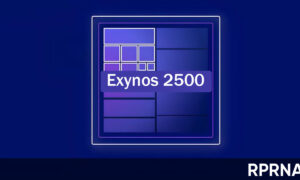Samsung’s One UI 3.0 is based on Google’s latest Android 11 OS. The latest version of the One UI comes with many new features. It comes with a lot of exciting new features, including a double-tap gesture anywhere on the home screen to turn off the display.
After starting the Android 11-based One UI 3.0 beta program for the Galaxy S20 series, Galaxy Note 20 series, Galaxy Note 10 series, and Galaxy S10 series users in eligible regions, the company now started rolling out the stable One UI 3.0 update for the Galaxy S20 series, Note 20 series, Note 10 series, Galaxy S10 series, and some more smartphones.
In this article, we will tell you everything about the Samsung One UI 3.0 including the features, eligible devices, and release date. Let’s find out.
[Samsung One UI 3.0 Features]
Samsung has changed the color scheme of the quick settings panel and used a Gaussian-like blur effect on the background of the toggle buttons. Secondly, the volume adjustment panel now acts vertically rather than a horizontal list of the volume sliders. There are currently, no changes found in the homescreen, lock screen, and the recent apps section.
READ MORE: Samsung One UI 4.0 device list
Stock Android 11 features include one-time permissions, device controls, quick access wallet, media controls in the quick settings, or Conversations in notifications and Samsung has tried to implement most of these features in One UI 3.0. However, some of the features including the device control are not part of One UI 3.0 because Samsung already has its own device control center.
[JOIN OUR SAMSUNG ON TELEGRAM]
Additionally, there are some features from the miscellaneous section including the new minimal battery use mode, which applies a dark theme, a minimal home screen, and limits apps for maximum power saving. Also, it has a new enhanced processing mode that boosts performance and more.
Bixby routines getting a new upgrade that allows you to set a custom icon for each routine, what actions are reversed when a routine ends, toggle various accessibility features, trigger Bixby, use new conditions, and more. There are also some Digital Wellbeing improvements.

Furthermore, the One UI 3.0 also brought users a new look at its stock Samsung apps. Now, you can revert any edits you make, Samsung messages now adds a new bin to store deleted messages, and the Contact app helps you quickly delete similar contacts and even more.
Samsung Internet is also getting some new changes, that include the ability to lock/reorder tabs, block pages from hijacking the back button, warnings about malicious sites, hiding the status bar when scrolling, and more.
One UI launcher now has new changes in the context menu section with an option to place a related widget by long-pressing an app icon. There’s also a new feature called “double-tap to sleep” that lets you turn off your display by double-tapping on the display’s empty area.
Samsung keyboard now supports inline autofill suggestions and image copy-past. However, it doesn’t offer new Android 11 emojis.
[Samsung One UI 3.0 device list]
Samsung Galaxy S and Note series Android 11 device list: RPRNA
- Galaxy S20 FE – Rolling
- Galaxy S20 FE 5G – Rolling
- Galaxy Note 20 – Rolling
- Galaxy Note 20 5G – Rolling
- Galaxy Note 20 Ultra – Rolling
- Galaxy Note 20 Ultra 5G – Rolling
- Galaxy Z Fold 2
- Galaxy Z Fold 2 5G
- Galaxy Fold
- Galaxy Fold 5G
- Galaxy Z Flip – Rolling
- Galaxy Z Flip 5G – Rolling
- Galaxy Tab S7
- Galaxy Tab S7 5G
- Galaxy Tab S7+
- Galaxy Tab S7+ 5G
- Galaxy S20 – Rolling
- Galaxy S20 5G – Rolling
- Galaxy S20 5G UW – Rolling
- Galaxy S20+ – Rolling
- Galaxy S20+ 5G – Rolling
- Galaxy S20 Ultra – Rolling
- Galaxy S20 Ultra 5G – Rolling
- Galaxy Note 10+ – Rolling
- Galaxy Note 10+ 5G – Rolling
- Galaxy Note 10 – Rolling
- Galaxy Note 10 5G
- Galaxy S10 5G – Rolling
- Galaxy S10+ – Rolling
- Galaxy S10 – Rolling
- Galaxy S10e – Rolling
- Galaxy Note 10 Lite
- Galaxy S10 Lite – Rolling
NOTE: Available to all devices listed above.
Samsung Galaxy A-series Android 11 device list: RPRNA
- Galaxy A01
- Galaxy A10
- Galaxy A10e
- Galaxy A10s
- Galaxy A11
- Galaxy A20
- Galaxy A20e
- Galaxy A20s
- Galaxy A21
- Galaxy A21s
- Galaxy A30
- Galaxy A30s
- Galaxy A31
- Galaxy A40
- Galaxy A41
- Galaxy A42 5G
- Galaxy A50
- Galaxy A50s
- Galaxy A51
- Galaxy A51 5G
- Galaxy A51 5G UW
- Galaxy A60
- Galaxy A70
- Galaxy A70s
- Galaxy A71
- Galaxy A71 5G
- Galaxy A71 5G UW
- Galaxy A80
- Galaxy A8s
- Galaxy A90 5G
- Galaxy A Quantum
NOTE: Most of the devices have received the Android 11 update
Samsung Galaxy M-series Android 11 device list: RPRNA
- Galaxy M01
- Galaxy M01s
- Galaxy M11
- Galaxy M21
- Galaxy M21s
- Galaxy M30s
- Galaxy M31
- Galaxy M31s
- Galaxy M40
- Galaxy M51
- Galaxy M31 Prime
Samsung Galaxy F-series Android 11 device list: RPRNA
- Galaxy F41
Samsung Galaxy Tab and other smartphones: RPRNA
- Galaxy Tab Active 3
- Galaxy Tab A7 10.4 2020
- Galaxy Tab S5e
- Galaxy Tab S6
- Galaxy Tab S6 5G
- Galaxy Tab S6 Lite
- Galaxy Tab A 10.1 2019
- Galaxy Tab A 8.0 2019
- Galaxy Tab Active Pro
- Galaxy Xcover 4s (Probably)
- Galaxy Xcover Pro
Samsung Galaxy devices receiving stable One UI 3.0 update: April 10, 2021
- Galaxy S20
- Galaxy S20 5G
- Galaxy S20 UW 5G
- Galaxy S20+
- Galaxy S20+ 5G
- Galaxy S20 Ultra
- Galaxy S20 Ultra 5G
- Galaxy Note 20
- Galaxy Note 20 5G
- Galaxy Note 20 Ultra
- Galaxy Note 20 Ultra 5G
- Galaxy S20 FE
- Galaxy Z Flip 5G
- Galaxy S10 Lite
- Galaxy Note 10
- Galaxy Note 10+
- Galaxy Note 10+ 5G
- Galaxy Z Flip
- Galaxy S10e
- Galaxy S10
- Galaxy S10+
- Galaxy S10 5G
- Galaxy Z Fold 2 5G
- Galaxy Fold
- Galaxy M31
- Galaxy Tab S7
- Galaxy Tab S7 5G
- Galaxy Tab S7+
- Galaxy Tab S7+ 5G
- Galaxy Note 10 Lite
- Galaxy M21
- Galaxy F41
- Galaxy A51
- Galaxy XCover Pro
- Galaxy M30s
- Galaxy M31s
- Galaxy A51 5G
- Galaxy A71 5G
- Galaxy Tab S6 Lite
Samsung Galaxy devices receiving One UI 3.1 update: April 10, 2021
- Galaxy Note 20
- Galaxy Note 20 5G
- Galaxy Note 20 Ultra
- Galaxy Note 20 Ultra 5G
- Galaxy Z Fold 2
- Galaxy Z Fold 2 5G
- Galaxy Z Flip
- Galaxy Z Flip 5G
- Galaxy S20 FE 5G
- Galaxy S20
- Galaxy S20 5G
- Galaxy S20+
- Galaxy S20+ 5G
- Galaxy S20 Ultra
- Galaxy S20 Ultra 5G
- Galaxy Note 10+
- Galaxy Note 10
- Galaxy S10e
- Galaxy S10
- Galaxy S10+
- Galaxy Fold
- Galaxy Tab S7
- Galaxy Tab S7+
- Galaxy Tab S7+ 5G
- Galaxy Note 10 Lite
- Galaxy Tab S6
- Galaxy Tab S6 WiFi
- Galaxy M51
- Galaxy S10 Lite
- Galaxy A71
- Galaxy M31
- Galaxy A50s
- Galaxy A50
- Galaxy A80
- Galaxy A70
- Galaxy A90
- Galaxy A40
- Galaxy A21s
- Galaxy A51
- Galaxy M21
- Galaxy F41
- Galaxy A51 5G
- Galaxy Tab S5e
[Samsung One UI 3.0 Release Date]
Samsung has already released the stable Android 11-based One UI 3.0 for the Galaxy S20 series, Note 20 series, Note 10 series, Galaxy S10 series, and some more smartphones.
The company is likely to start the One UI 3.0 public rollout in more countries and more devices very soon.
Samsung One UI 3.0 stable release date:
About the stable One UI 3.0 update rollout, Samsung is now rolling out the stable One UI 3.0 for the Galaxy S20 series, Note 20 series, Note 10 series, Galaxy S10 series, and some more smartphones.
Join the One UI 3.0 beta program:
You can join the One UI 3.0 beta program by heading to the Samsung Members app. Open the One UI 3.0 beta banner in the app, confirm your registration information, and now you will be able to download the Android 11-based One UI 3.0 beta build.
Samsung One UI 3.0 Beta is available for these phones:
- Samsung Galaxy S20
- Samsung Galaxy S20 5G
- Samsung Galaxy S20+
- Samsung Galaxy S20+ 5G
- Samsung Galaxy S20 Ultra
- Samsung Galaxy S20 Ultra 5G
- Samsung Galaxy Note 20
- Samsung Galaxy Note 20 5G
- Samsung Galaxy Note 20 Ultra
- Samsung Galaxy Note 20 Ultra 5G
- Samsung Galaxy Note 10
- Samsung Galaxy Note 10 5G
- Samsung Galaxy Note 10+
- Samsung Galaxy Note 10+ 5G
- Samsung Galaxy S10e
- Samsung Galaxy S10
- Samsung Galaxy S10+
- Samsung Galaxy S10 5G
- Samsung Galaxy Z Filp 5G
- Samsung Galaxy Z Fold 2 5G
- Samsung Galaxy S20 FE
- Galaxy A51 5G
- Galaxy M31
Samsung One UI 3.0 beta program available in these countries:
- India
- Korea
- US
- UK
- Germany
- Poland
- China
Official Android 11 roadmap – Samsung USA
In December 2020
- Galaxy S20 Ultra
- Galaxy S20+
- Galaxy S20
In January 2021
- Galaxy Note 20
- Galaxy Note 20 Ultra
- Galaxy S20 FE
In February 2021
- Galaxy Fold
- Galaxy Z Fold 2
- Galaxy S10
- Galaxy S10+
- Galaxy S10e
- Galaxy S10 Lite
- Galaxy Z Flip
- Galaxy Z Flip 5G
- Galaxy Note 10
- Galaxy Note 10+
Samsung One UI 3.0 Roadmap – Official Android 11 – Samsung India
Samsung One UI 3.0 Roadmap – Official Android 11 – Samsung Egypt
Android 11 update schedule and the new Samsung UI 3.0:
- Galaxy A10 (Preparing in August 2021)
- Galaxy A10s (Preparing in August 2021)
- Galaxy A20 (Preparing in August 2021)
- Galaxy A20s (Preparing in August 2021)
- Galaxy A30 (Preparing in July 2021)
- Galaxy A30s (Preparing in August 2021)
- Galaxy A50 (Preparing in April 2021)
- Galaxy A70 (Preparing in May 2021)
- Galaxy A80 (Preparing in May 2021)
- Galaxy S10 (Preparing in January 2021)
- Galaxy S10 + (Preparing in January 2021)
- Galaxy M30s (Preparing in March 2021)
- Galaxy Note 10 (Preparing in January 2021)
- Galaxy Note 10+ (Preparing in January 2021)
- Galaxy Tab A (Preparing in June 2021)
- Galaxy Tab A 8 (2019) (Preparing in September 2021)
- Galaxy Tab A 10.1 (Preparing in August 2021)
- Galaxy Tab S5e (Preparing in July 2021)
- Galaxy Tab S6 (Preparing in May 2021)
- Galaxy Fold (Preparing in February 2021)
- Galaxy Tab Active Pro (Preparing in August 2021)
- Galaxy A71 (Preparing in May 2021)
- Galaxy S10 Lite (Preparing in January 2021)
- Galaxy Z Flip (Preparing in January 2021)
- Galaxy Z Fold 2 (Preparing in January 2021)
- Galaxy S20 (Preparing in December 2020)
- Galaxy S20 + (Preparing in December 2020)
- Galaxy S20 Ultra (Preparing in December 2020)
- Galaxy A51 (Preparing in March 2021)
- Galaxy Note 10 Lite (Preparing in March 2021)
- Galaxy A31 (Preparing in May 2021)
- Galaxy Note 20 (Preparing in January 2021)
- Galaxy Note 20 Ultra (Preparing in January 2021)
- Galaxy A21s (Preparing in May 2021)
- Galaxy M31 (Preparing in March 2021)
- Galaxy M51 (Preparing in April 2021)
- Galaxy M21 (Preparing in March 2021)
- Galaxy A01- Core (Preparing in June 2021)
- Galaxy A01 (Preparing in June 2021)
- Galaxy Tab S6 Lite (Preparing in May 2021)
- Galaxy Tab S7 (Preparing in March 2021)
- Galaxy A11 (Preparing in June 2021)
- Galaxy M11 (Preparing in June 2021)






